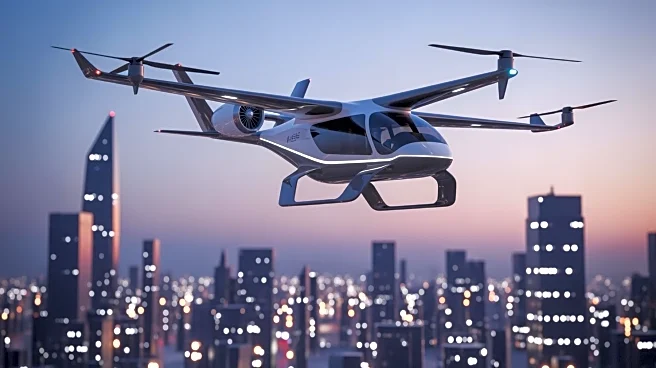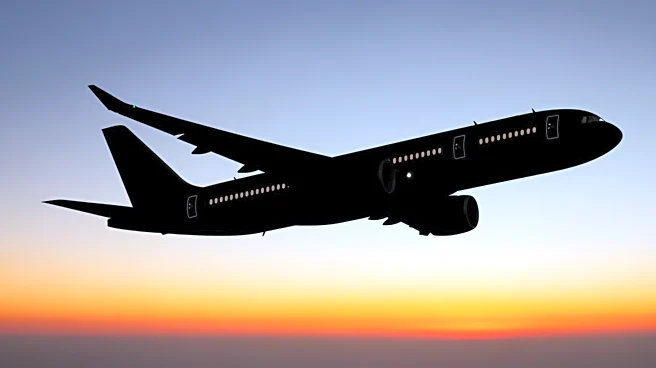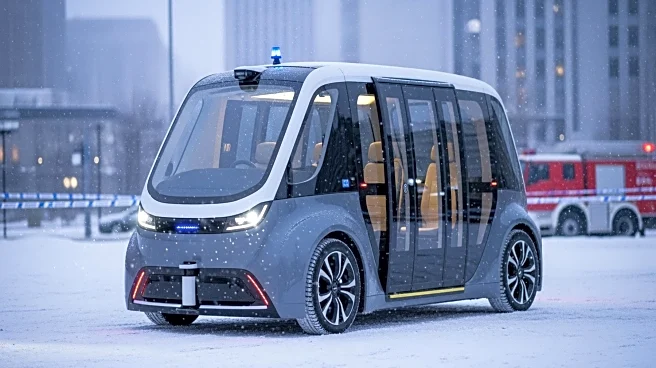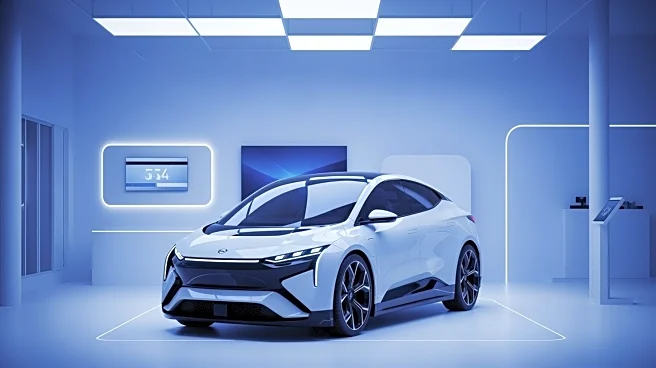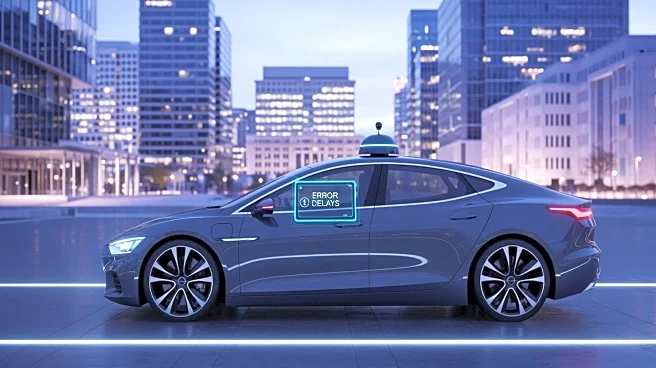What's Happening?
Archer Aviation, led by CEO Adam Goldstein, is making significant strides in the development and deployment of electric vertical take-off and landing (eVTOL) aircraft, commonly referred to as flying cars. These aircraft are designed to operate like helicopters
but are quieter, safer, and more cost-effective. Archer's flagship model, Midnight, is a 6,500-pound eVTOL capable of carrying a pilot and four passengers over short to mid-distances. The company plans to launch commercial services in Los Angeles and the San Francisco Bay area within the next two years. Archer has already delivered aircraft to the U.S. military and is working towards full autonomy for its eVTOLs. The company has also partnered with Abu Dhabi Aviation to launch services in the UAE.
Why It's Important?
The introduction of eVTOLs could revolutionize urban transportation by providing a quieter and more efficient alternative to helicopters, particularly in congested cities. This technology has the potential to reduce traffic congestion and lower transportation costs. The advancements in eVTOLs also highlight the growing interest in sustainable and innovative transportation solutions. Archer's progress in this field could position the U.S. as a leader in advanced air mobility, with significant implications for urban planning, infrastructure development, and environmental impact. The support from political figures like President Trump and Transportation Secretary Sean Duffy underscores the strategic importance of this technology.
What's Next?
Archer Aviation is preparing for the Federal Aviation Administration's Type Inspection Authorization, the final certification stage for its Midnight eVTOL. The company aims to demonstrate its capabilities during the 2028 Los Angeles Olympics, potentially setting a precedent for future urban air mobility solutions. As battery technology improves, eVTOLs could become larger and more autonomous, further expanding their use cases. Archer's focus on scaling production capabilities will be crucial in meeting future demand and achieving widespread adoption.
Beyond the Headlines
The development of eVTOLs raises important questions about regulatory frameworks, infrastructure requirements, and public acceptance. Ensuring safety and reliability will be paramount, as will addressing concerns about airspace management and potential noise pollution. The transition to autonomous operations will require advancements in communication systems and consumer trust. As eVTOLs become more prevalent, they could influence urban design and mobility patterns, potentially reshaping how cities are structured and how people move within them.
